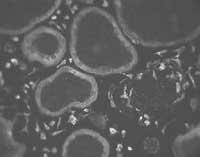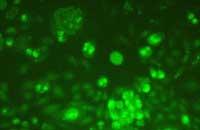Rare plant transport
2001/09/27 Agirre Ruiz de Arkaute, Aitziber - Elhuyar Zientzia
auxins responsible for plant growth is curious. Although previously unknown, the latest research has helped clarify the system they use for it.
It is well known that the hormones responsible for plant growth are auxins, which especially affect cell duplication and extension. But auxins, however, occur in the new growing shoots, and the rest of the plant must be transported cells to cell through a cell line. For this, the German Gerd Jürgens and his co-workers have seen that they use a totally sophisticated transport system at the Plant Molecular Biology Center.

It is surprising how auxins are transported from one cell to another. At one end of the cell are transporters that allow auxin to enter and at the other end, allow the exit to the next cell. However, so far it was considered that these transporters were constantly associated with the plasma membrane, so to carry them from one end to the other of the cell, they should be dispersed throughout the plasma membrane of the cell. But Jüngens has shown otherwise. Transporters are not continuously associated with the plasma membrane, but they reach through the vesicles from the upper lower end of the cell. The conveyors penetrate the vesicles and are pumped to the other end of the cell.
In the image on the left you can see the transporters involved in the penetration and expulsion of the auxins, at the two ends of the cell, while on the right the vesicles with which they are transported are marked.
The importance of this discovery lies in the fact that pumping occurs in a single direction and the asymmetric distribution of the conveyors, through which the cell is obtained

Gai honi buruzko eduki gehiago
Elhuyarrek garatutako teknologia





